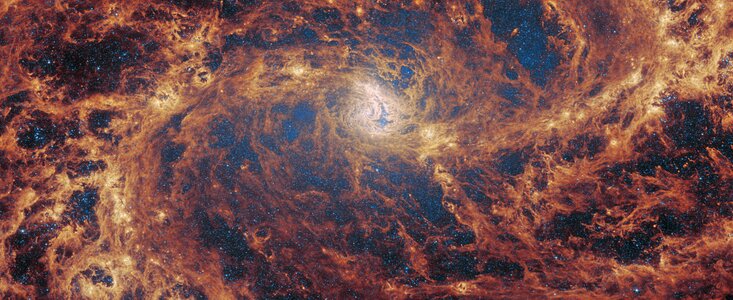weic2509 — Science Release
Webb uncovers possible hidden supermassive black hole in nearby spiral galaxy M83
17 April 2025
Astronomers using the NASA/ESA/CSA James Webb Space Telescope have discovered evidence that suggests the presence of a long-sought supermassive black hole at the heart of the nearby spiral galaxy Messier 83 (M83). This surprising finding, made possible by Webb’s Mid-Infrared Instrument (MIRI), reveals highly ionised neon gas that could be a telltale signature of an active galactic nucleus (AGN), a growing black hole at the center of a galaxy.
M83, also known as the Southern Pinwheel Galaxy, has long been an enigma. While massive spiral galaxies often host AGNs, astronomers have struggled for decades to confirm one in M83. Previous observations hinted that if a supermassive black hole existed there, it must be dormant or hidden behind thick dust. Now, Webb’s unprecedented sensitivity and spatial resolution have unveiled signs that suggest otherwise.
“Our discovery of highly ionised neon emission in the nucleus of M83 was unexpected,” said Svea Hernandez, lead author of the new study with AURA for the European Space Agency at the Space Telescope Science Institute in Baltimore, USA. “These signatures require large amounts of energy to be produced—more than what normal stars can generate. This strongly suggests the presence of an AGN that has been elusive until now.”
“Before Webb, we simply did not have the tools to detect such faint and highly ionised gas signatures in M83’s nucleus,” Hernandez added. “Now, with its incredible mid-infrared sensitivity, we are finally able to explore these hidden depths of the galaxy and uncover what was once invisible.”
Webb’s mid-infrared observations allowed astronomers to peer through dust and detect the telltale signs of highly ionised gas in small clumps near the galactic nucleus. The energy needed to create these signatures is significantly higher than what supernovae or other stellar processes can provide, making an AGN the most likely explanation. However, alternative scenarios, such as extreme shock waves in the interstellar medium, are still being investigated.
“Webb is revolutionising our understanding of galaxies,” said co-author Linda Smith of the Space Telescope Science Institute. “For years, astronomers have searched for a black hole in M83 without success. Now, we finally have a compelling clue that suggests one may be present.”
“This discovery showcases how Webb is making unexpected breakthroughs,” Smith continued. “Astronomers thought they had ruled out an AGN in M83, but now we have fresh evidence that challenges past assumptions and opens new avenues for exploration.”
The team is planning follow-up studies using other observatories, such as the NASA/ESA Hubble Space Telescope, the Atacama Large Millimeter/submillimeter Array (ALMA) and the Very Large Telescope (VLT), to further investigate the nature of the gas and confirm the presence of a supermassive black hole in M83. These additional observations will help determine whether the newly detected emission definitively originates from an AGN or if other high-energy processes are at play.
This study demonstrates Webb’s ability to uncover hidden structures within galaxies and opens the door to more discoveries in the realm of black hole astrophysics. As astronomers continue to push the limits of Webb’s capabilities, the universe’s most elusive mysteries are coming into sharper focus.
The results have been published today in The Astrophysical Journal.
More information
Webb is the largest, most powerful telescope ever launched into space. Under an international collaboration agreement, ESA provided the telescope’s launch service, using the Ariane 5 launch vehicle. Working with partners, ESA was responsible for the development and qualification of Ariane 5 adaptations for the Webb mission and for the procurement of the launch service by Arianespace. ESA also provided the workhorse spectrograph NIRSpec and 50% of the mid-infrared instrument MIRI, which was designed and built by a consortium of nationally funded European Institutes (The MIRI European Consortium) in partnership with JPL and the University of Arizona.
Webb is an international partnership between NASA, ESA and the Canadian Space Agency (CSA).
Image Credit: ESA/Webb, NASA & CSA, A. Adamo (Stockholm University) and the FEAST JWST team
Links
Contacts
Svea Hernandez
AURA for the European Space Agency - Space Telescope Science Institute
Email: [email protected]
Bethany Downer
ESA/Webb Chief Science Communications Officer
Email: [email protected]
ESA Newsroom and Media Relations Office
Email: [email protected]
About the Release
| Release No.: | weic2509 | |
|---|---|---|




